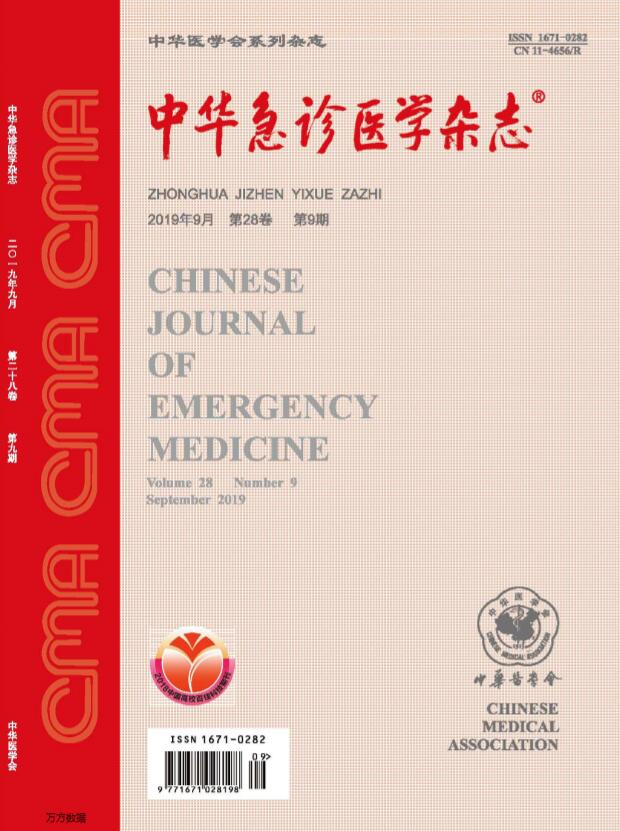白细胞介素35对败血症患者CD4+和CD8+T细胞的调节作用
Q4 Nursing
引用次数: 0
摘要
目的研究败血症患者血浆白细胞介素35(IL-35)的表达,并评估IL-35对败血症患者CD4+和CD8+T细胞的调节活性。方法采用前瞻性研究。41名败血症患者和19名健康对照被纳入本研究。根据入院后28天的生存结果,将败血症患者进一步分为生存组(n=30)和死亡组(n=11)。在就诊后一小时内采集外周血样本。通过酶联免疫吸附试验(ELISA)测量血浆IL-35水平,同时通过流式细胞术测量CD3+、CD4+和CD8+T细胞计数。还评估了IL-35表达/T细胞计数与连续器官衰竭评估(SOFA)评分之间的相关性。纯化败血症患者的外周CD4+和CD8+T细胞,并用重组人IL-35刺激48小时。通过实时PCR测量CD4+T细胞中T-bet、GATA-3、FoxP3和RORγT的mRNA相对水平,以及CD8+T淋巴细胞中穿孔素、颗粒酶B和FasL的mRNA相对含量。用ELISA法测定培养上清液中干扰素-γ(IFN-γ)、IL-4、IL-10、IL-17和肿瘤坏死因子-α(TNF-α)的水平。比较IL-35刺激前后的转录因子水平和细胞因子表达。结果脓毒症患者血浆IL-35显著高于对照组[(76.76±10.33)pg/mLvs(27.53±8.31)pg/mL,P<0.05],T细胞计数与SOFA评分呈负相关(P<0.01)IL-35刺激导致败血症患者CD4+T细胞中Th1转录因子T-bet和Th17转录因子RORγT的mRNA相对水平降低(P<0.01),而调节性T细胞转录因子FoxP3 mRNA升高(P<0.01),IL-35刺激不影响CD4+T细胞中Th2转录因子GATA-3 mRNA(P=0.745)。CD4+T淋巴细胞对IL-35刺激的IFN-γ和IL-17产生显著降低(P<0.05),而IL-10增加(P<0.01),IL-4在有和无IL-35刺激时相当(P=0.536)。IL-35刺激导致穿孔素和颗粒酶B mRNA相对水平下调(P<0.01),FasL mRNA在有和无IL-35刺激的CD8+T细胞之间具有可比性(P=0.795),IFN-γ和TNF-α的分泌也在IL-35刺激下减少(P<0.05)。结论血浆IL-35水平升高是败血症患者预后不良的重要指标。IL-35抑制败血症患者CD4+和CD8+T细胞的活性,可能参与败血症的发病机制。关键词:败血症;白细胞介素-35;细胞因子;T淋巴细胞;免疫本文章由计算机程序翻译,如有差异,请以英文原文为准。
The regulatory activity of interleukin-35 to CD4+ and CD8+ T cells in sepsis patients
Objective
To investigate plasma interleukin-35 (IL-35) expression in sepsis patients, and to assess the regulatory activity of IL-35 on CD4+ and CD8+ T cells in sepsis patients.
Methods
A prospective study was conducted. Forty-one sepsis patients and nineteen healthy controls were enrolled in this study. According to the survival outcome on 28 day after admission, sepsis patients were further divided into the survival group (n=30) and death group (n=11). Peripheral blood samples were collected within one hour of visit. Plasma IL-35 level was measured by enzyme linked immunosorbent assay (ELISA), while CD3+, CD4+, and CD8+ T cell counts were measured by flow cytometry. The correlation between IL-35 expression/T cell counts and sequential organ failure assessment (SOFA) score was also assessed. Peripheral CD4+ and CD8+ T cells from sepsis patients were purified and stimulated with recombinant human IL-35 for 48 h. mRNA relative levels of T-bet, GATA-3, FoxP3, and RORγt in CD4+ T cells and perforin, granzyme B, and FasL in CD8+ T cells were measured by real-time PCR. Interferon-γ (IFN-γ), IL-4, IL-10, IL-17, and tumor necrosis factor-α (TNF-α) levels in the cultured supernatants were measured by ELISA. Transcription factor level and cytokine expression was compared prior to and post IL-35 stimulation.
Results
Plasma IL-35 was significantly elevated in sepsis patients when compared with controls [(76.76±10.33) pg/mL vs (27.53±8.31) pg/mL, P 0.05). Moreover, T cell counts were negatively correlated with SOFA score (P<0.01). IL-35 stimulation resulted in the reduction of mRNA relative level of Th1 transcription factor T-bet and Th17 transcription factor RORγt in CD4+ T cells from sepsis patients (P<0.01), while elevation in regulatory T cell transcription factor FoxP3 mRNA (P<0.01). However, IL-35 stimulation did not affect Th2 transcription factor GATA-3 mRNA in CD4+ T cells (P=0.745). IFN-γ and IL-17 production by CD4+ T cells was significantly decreased in response to IL-35 stimulation (P<0.05), while IL-10 was increased (P<0.01) and IL-4 was comparable (P=0.536) between CD4+ T cells with and without IL-35 stimulation. IL-35 stimulation led to the down-regulation of mRNA relative level of perforin and granzyme B (P<0.01). However, FasL mRNA was comparable between CD8+ T cells with and without IL-35 stimulation (P=0.795). IFN-γ and TNF-α secretion was also reduced in response to IL-35 stimulation (P<0.05).
Conclusion
Elevated plasma IL-35 level is an important indicator for poor prognosis of sepsis patients. IL-35 inhibits the activity of CD4+ and CD8+ T cells in sepsis patients, and might take part in the pathogenesis of sepsis.
Key words:
Sepsis; Interleukin-35; Cytokine; T lymphocytes; Immune
求助全文
通过发布文献求助,成功后即可免费获取论文全文。
去求助
来源期刊

中华急诊医学杂志
Nursing-Emergency Nursing
CiteScore
0.10
自引率
0.00%
发文量
8629
期刊介绍:
Chinese Journal of Emergency Medicine is the only national journal which represents the development of emergency medicine in China. The journal is supervised by China Association of Science and Technology, sponsored by Chinese Medical Association, and co-sponsored by Zhejiang University. The journal publishes original research articles dealing with all aspects of clinical practice and research in emergency medicine. The columns include Pre-Hospital Rescue, Emergency Care, Trauma, Resuscitation, Poisoning, Disaster Medicine, Continuing Education, etc. It has a wide coverage in China, and builds up communication with Hong Kong, Macao, Taiwan and international emergency medicine circles.
 求助内容:
求助内容: 应助结果提醒方式:
应助结果提醒方式:


